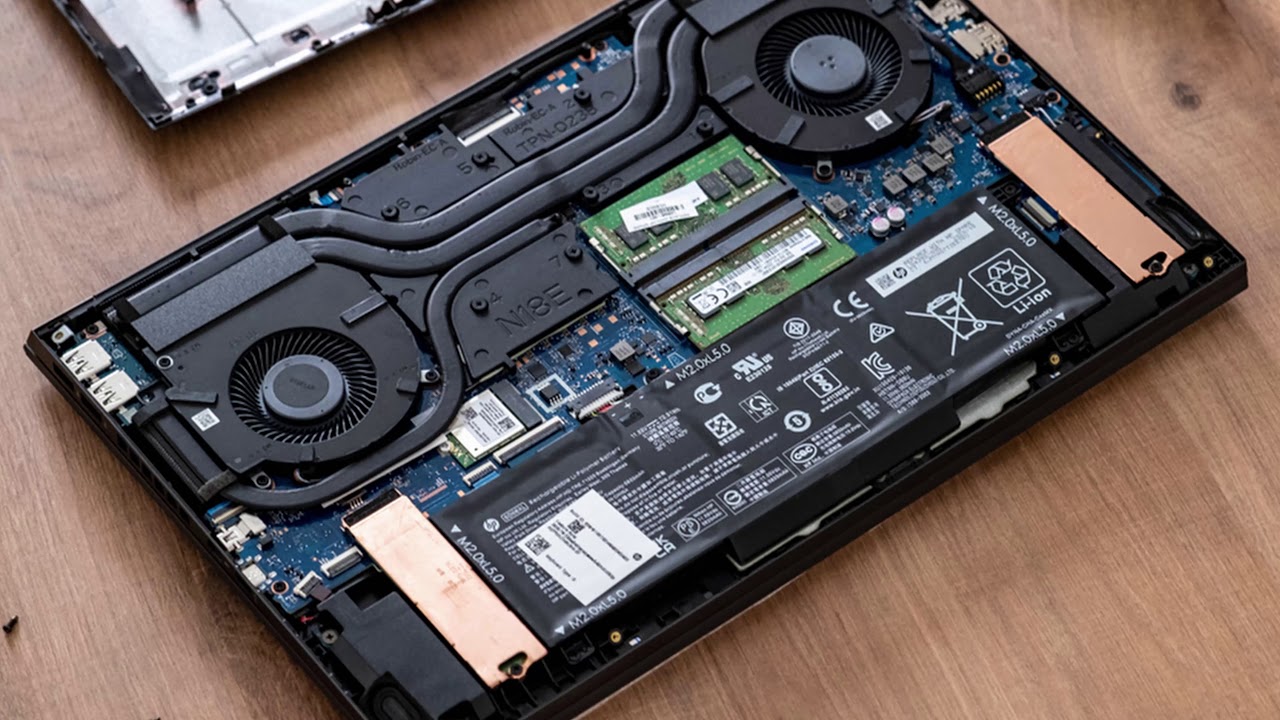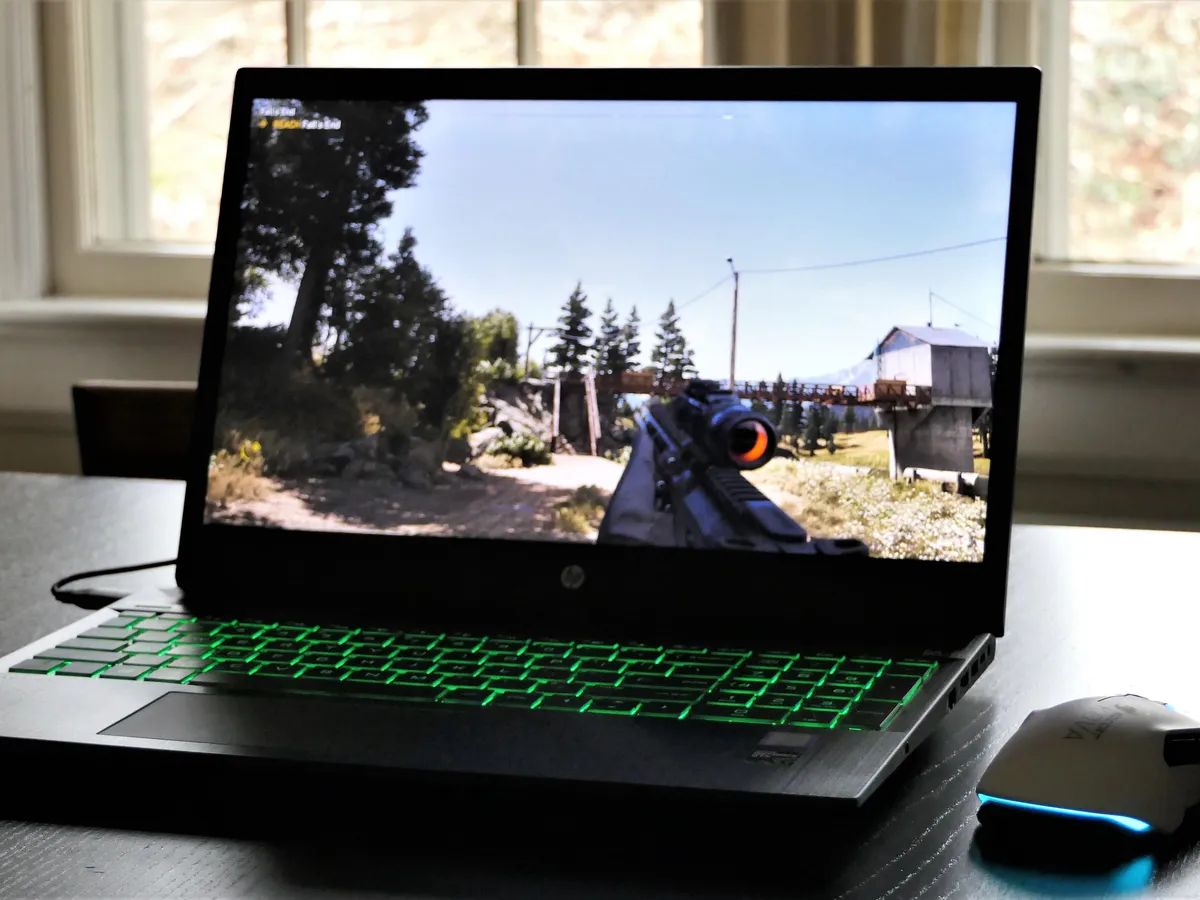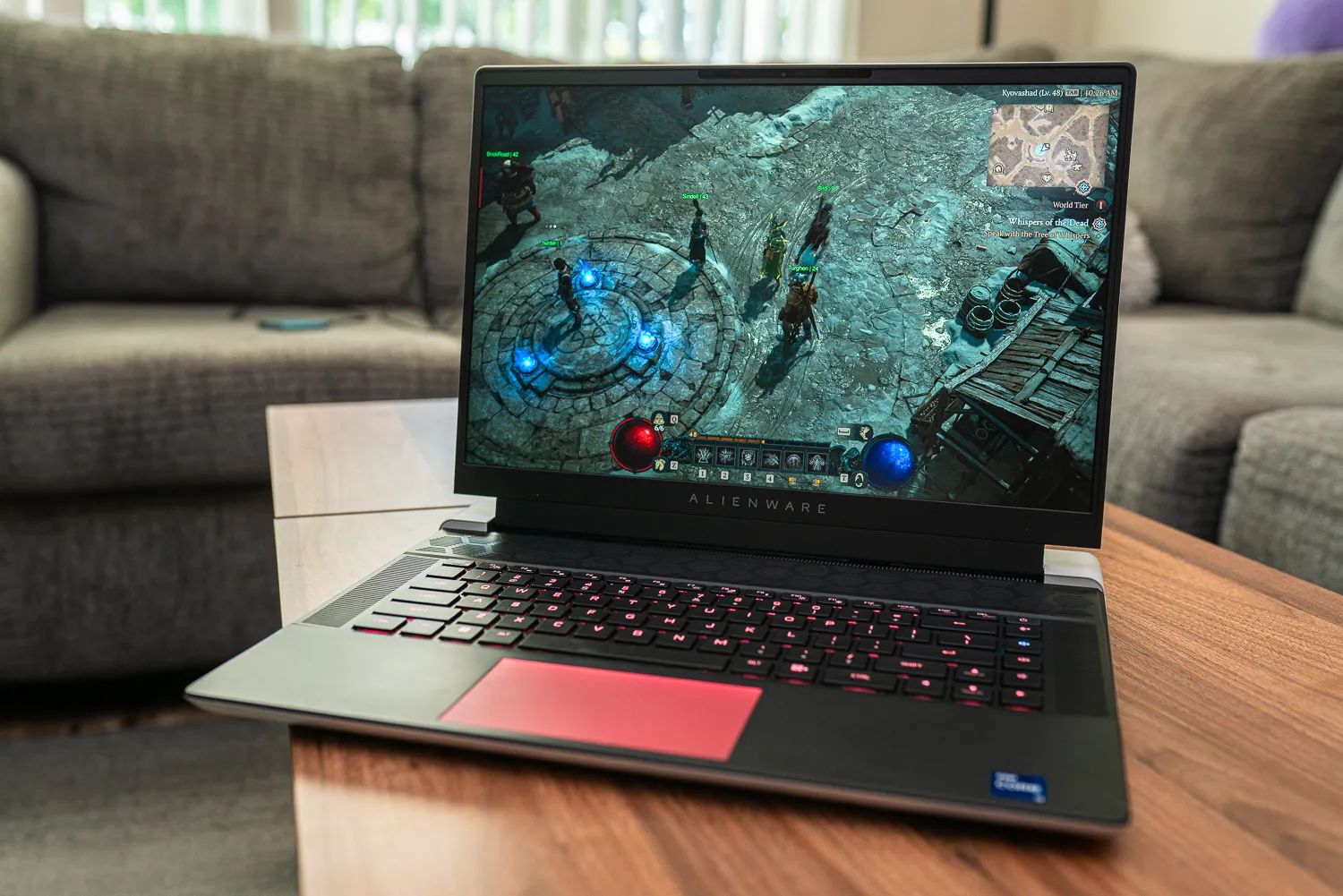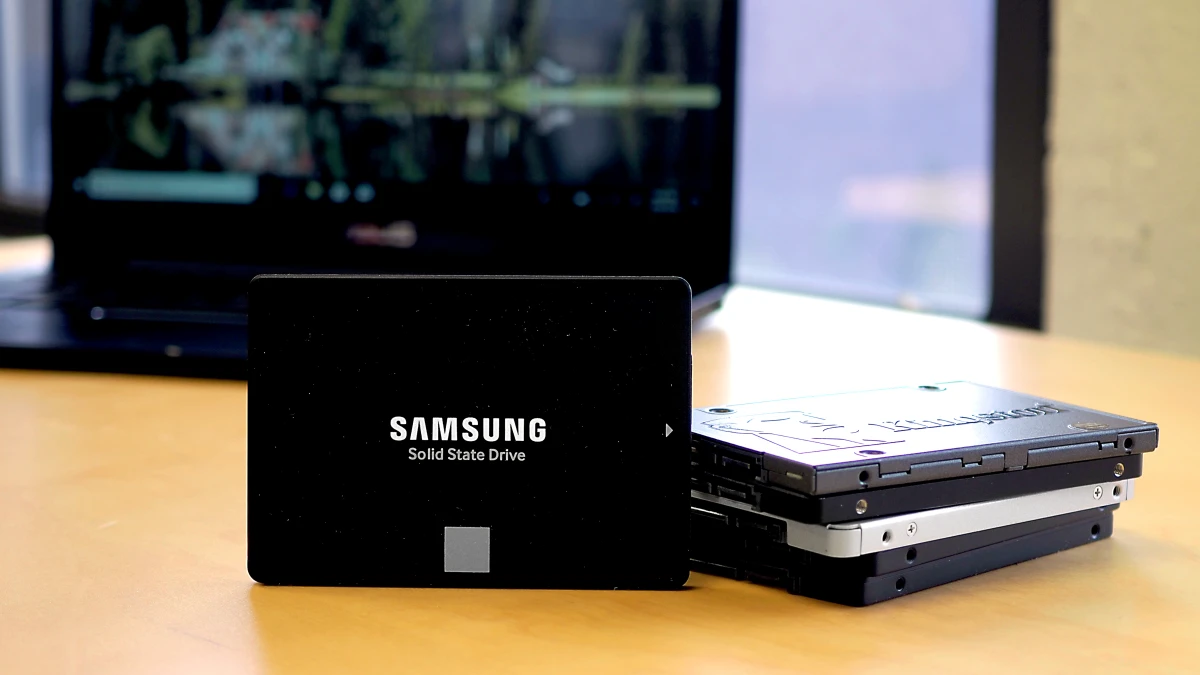Introduction
Welcome to this guide on how to boot up an HP Omen Laptop from an internal solid state drive (SSD). The HP Omen Laptop is a powerful computing device that can offer superior performance with the right configuration. By booting from an internal SSD, you can significantly improve the speed and responsiveness of your laptop’s startup process.
Before we dive into the steps, it’s essential to understand the benefits of using an internal SSD as your boot drive. Solid state drives are known for their faster data transfer rates and reduced loading times compared to traditional hard disk drives (HDDs). By utilizing an SSD as your boot drive, you can experience quicker system boot-up times, faster application launches, and overall improved system performance.
In this guide, we will walk you through the process of booting up an HP Omen Laptop from the internal SSD. We will cover the necessary steps from shutting down the laptop correctly to accessing the BIOS menu, changing the boot order, saving the BIOS settings, and verifying the successful boot from the internal SSD.
It’s important to note that different HP Omen Laptop models may have slight variations in their BIOS settings and menu options. However, the general process remains the same. If you encounter any difficulties or have specific questions related to your HP Omen Laptop, refer to the user manual or reach out to HP support for further assistance.
Now, let’s jump into the step-by-step instructions to boot up your HP Omen Laptop from an internal solid state drive!
Step 1: Shutting Down the HP Omen Laptop Properly
The first step to booting up your HP Omen Laptop from an internal solid state drive is to ensure that the laptop is shut down properly. This is crucial to prevent any data loss or system errors during the booting process.
To shut down your HP Omen Laptop, follow these simple steps:
- Save your work and close all open applications. It’s essential to save any unsaved data to avoid losing it.
- Click on the Start menu or press the Windows key on your keyboard to open the Start menu.
- From the Start menu, click on the Power icon.
- A drop-down menu will appear with several options, including Sleep, Restart, and Shut down. Select the Shut down option to turn off your laptop.
- Wait for the laptop to completely shut down. You can ensure this by checking if the power indicator light is turned off.
Once your HP Omen Laptop is shut down properly, you are ready to move on to the next step of accessing the BIOS menu.
Keep in mind that shutting down your laptop properly ensures a clean start when booting up from the SSD. This step is important to avoid any potential conflicts or issues that may arise if the laptop was not shut down correctly.
Step 2: Accessing the BIOS Menu
In order to change the boot order and boot up your HP Omen Laptop from the internal solid state drive, you need to access the BIOS menu. The BIOS (Basic Input/Output System) is a firmware interface that allows you to configure various hardware settings of your laptop.
Here’s how you can access the BIOS menu on your HP Omen Laptop:
- Start by powering on your laptop. Press the power button and wait for the startup screen to appear.
- As soon as the startup screen appears, start tapping the specific key or key combination to access the BIOS menu. The key or key combination may vary depending on your HP Omen Laptop model, but it is typically displayed on the startup screen. Common keys to access the BIOS menu are F2, F10, or the Delete key.
- Continue tapping the key or key combination until the BIOS menu appears. Be patient as it may take a few moments for the menu to load.
Once you have successfully accessed the BIOS menu, you can proceed to the next step of changing the boot order.
It’s worth noting that the BIOS menu provides access to various settings that affect the performance and functionality of your HP Omen Laptop. Take care not to modify any settings unless you are familiar with their purpose and potential consequences. Making incorrect changes in the BIOS menu can lead to system instability or failure.
Now that you’ve entered the BIOS menu, let’s move on to the next step of changing the boot order to boot from the internal solid state drive.
Step 3: Changing the Boot Order
Changing the boot order is a crucial step in booting up your HP Omen Laptop from the internal solid state drive. By adjusting the boot order, you ensure that the laptop prioritizes the SSD as the primary boot device.
Follow the steps below to change the boot order in the BIOS menu:
- Within the BIOS menu, navigate to the section labeled “Boot” or “Boot Options.” The exact wording may vary depending on your laptop model.
- Locate the option that refers to the boot order or boot sequence. This may be listed as “Boot Priority,” “Boot Sequence,” or something similar.
- Use the appropriate keys (usually the arrow keys) to select the option related to changing the boot order.
- Once you’ve selected the boot order option, you will see a list of devices. The device at the top of the list is the current primary boot device.
- Use the arrow keys to move the highlighted selection to the internal solid state drive (SSD). This will typically be listed as “SATA0” or “SSD.”
- Move the SSD to the top of the boot order list by using the designated keys for moving items up or down (usually the + and – keys).
- Once the SSD is at the top of the boot order list, save the changes by following the instructions provided in the BIOS menu. This is typically done by pressing the F10 key to save and exit.
By changing the boot order to prioritize the internal solid state drive, you are ensuring that the HP Omen Laptop will attempt to boot from the SSD first when powered on.
It’s important to note that the specific steps for changing the boot order may vary slightly depending on your HP Omen Laptop model and BIOS version. Refer to your laptop’s user manual or HP support resources if you encounter any difficulties or confusion during this process.
Now that you’ve successfully changed the boot order, let’s move on to the next step of saving the BIOS settings and restarting the laptop.
Step 4: Saving the BIOS Settings and Restarting the Laptop
After changing the boot order in the BIOS menu to prioritize the internal solid state drive (SSD), it’s crucial to save the changes and restart the HP Omen Laptop. This step ensures that the updated BIOS settings take effect and the laptop attempts to boot from the SSD.
Follow these steps to save the BIOS settings and restart your laptop:
- In the BIOS menu, locate the option to save settings and exit. This option is usually labeled as “Save and Exit,” “Save Changes and Exit,” or similar.
- Select the save settings and exit option using the appropriate key or key combination. This is typically the F10 key, but it may vary depending on your HP Omen Laptop model and BIOS version.
- Confirm your selection when prompted to save changes and exit the BIOS menu. This action ensures that the updated boot order settings are saved.
- The laptop will then restart automatically.
During the restart process, the HP Omen Laptop will attempt to boot from the internal solid state drive as the primary boot device. As a result, you should experience faster startup times and improved overall performance.
It’s important to allow the laptop to complete the restart process without interruption. Interrupting the restart or powering off the laptop during this stage may cause issues and prevent successful booting from the SSD.
Once the HP Omen Laptop has finished restarting, you can proceed to the next step to verify that the laptop is indeed booting from the internal solid state drive.
Now that you’ve saved the BIOS settings and restarted the laptop, let’s move on to the next step of verifying the successful boot from the internal SSD.
Step 5: Verifying the Boot from the Internal Solid State Drive
After changing the boot order and saving the BIOS settings, it’s important to verify that the HP Omen Laptop is successfully booting from the internal solid state drive (SSD). This step confirms that the changes made in the previous steps have taken effect.
Follow these steps to verify the boot from the internal SSD:
- Power on your HP Omen Laptop and closely observe the startup process.
- If the laptop successfully boots from the internal SSD, you should notice a significant improvement in the startup time. The HP logo and startup screen should appear quickly, indicating that the SSD is being utilized as the boot device.
- Once the startup process is complete, you can also check the drive on your laptop’s file explorer or operating system to confirm that it is indeed the internal SSD.
- You can further verify the boot drive by checking the BIOS menu again. The internal solid-state drive (SSD) should still be listed as the first boot device.
If, for any reason, the HP Omen Laptop does not successfully boot from the internal SSD, double-check the BIOS settings and ensure that the boot order is correctly configured. Repeat the necessary steps in the previous sections to make the adjustments and save the changes in the BIOS menu.
In some cases, you may encounter issues that prevent successful booting from the internal solid state drive. If this happens, consult the user manual or reach out to HP support for further assistance and troubleshooting.
Once you have verified that the HP Omen Laptop is successfully booting from the internal solid state drive, you can enjoy the improved performance and faster startup times offered by the SSD.
Now that you’ve verified the successful boot from the internal SSD, let’s move on to the next step, which covers troubleshooting common issues that may arise during this process.
Step 6: Troubleshooting Common Issues
While the process of booting up an HP Omen Laptop from an internal solid state drive (SSD) is generally straightforward, there may be some common issues that can arise. It’s important to be aware of these potential issues and understand how to troubleshoot them effectively. Here are some common issues you may encounter and their potential solutions:
- SSD not recognized: If your HP Omen Laptop doesn’t recognize the internal SSD as a boot device, double-check the connections to ensure that the SSD is properly installed. Additionally, ensure that the SSD is compatible with your laptop model and that it’s formatted correctly.
- Incorrect boot order: If the laptop is not booting from the internal SSD, access the BIOS menu again and confirm that the boot order is set correctly. Make sure that the internal SSD is listed as the first boot device. If necessary, make the necessary adjustments and save the changes in the BIOS menu.
- BIOS update required: It’s possible that a BIOS update is required to ensure compatibility with the internal SSD. Visit the official HP website and check for any available BIOS updates for your specific laptop model. Follow the instructions provided by HP to update the BIOS if necessary.
- Hardware compatibility issues: In some cases, there may be compatibility issues between the HP Omen Laptop and the internal SSD. Check the specifications and requirements of the SSD to ensure that it is compatible with your laptop model.
- Seek professional assistance: If you have gone through the troubleshooting steps above and continue to experience issues, it may be necessary to seek professional assistance. Reach out to HP support or consult a computer technician who can provide more advanced troubleshooting and diagnosis.
Remember, every HP Omen Laptop model may have slight variations in the BIOS settings and menu options. Refer to your laptop’s user manual or HP support resources for model-specific information and troubleshooting guidance.
By being aware of these common issues and their potential solutions, you can effectively troubleshoot and resolve any obstacles that may arise during the process of booting up your HP Omen Laptop from an internal solid state drive.
Now that you have a better understanding of troubleshooting common issues, you are well-equipped to handle any challenges that may come your way.
Conclusion
Congratulations! You have successfully learned how to boot up an HP Omen Laptop from an internal solid state drive (SSD). By following the steps outlined in this guide, you can enjoy faster startup times and improved overall performance for your laptop.
Starting with the proper shutdown of your HP Omen Laptop, you then accessed the BIOS menu and changed the boot order to prioritize the internal SSD. After saving the BIOS settings and restarting the laptop, you verified that the boot process was successfully happening from the internal SSD.
Throughout the process, it’s important to remember potential troubleshooting steps in case you encounter any issues. Make sure the SSD is properly installed, the boot order is set correctly, and the BIOS is up to date. If problems persist, consider seeking professional assistance from HP support or a computer technician.
By utilizing an internal SSD as your boot drive, you can enjoy the benefits of faster data transfer rates, reduced loading times, and overall improved system performance. The speed and responsiveness of your HP Omen Laptop will be noticeably enhanced, enabling you to work seamlessly and efficiently.
Remember, every HP Omen Laptop model may have slight variations in the BIOS settings and menu options, so consult your user manual or reach out to HP support for specific information related to your laptop model.
We hope this guide has been helpful in your journey to boot up your HP Omen Laptop from an internal solid state drive. Enjoy the improved performance and efficiency that come with this upgrade!

























